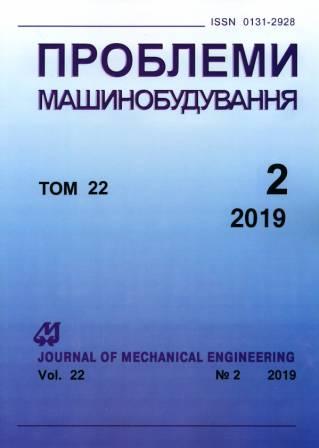Wet Steam Flow Ionization and Prospects to Practically Apply Electrical Discharge Devices in Turbo Installations
Keywords:
steam flow, supersonic nozzle, ionization, non-equilibrium processes, wet steam turbine, efficiencyAbstract
This paper considers the experimental studies on steam flow ionization in a supersonic nozzle and possibility of artificial flow ionization influence on unequal-weight processes in the low-pressure cylinder and an increase in turbine efficiency. Results of studies to assess the effect of barrier and corona ionizers on the process of intensifying fine-dispersed wetness in a supersonic nozzle are presented. It is shown that ionization allows intensifying the proc-ess condensation of steam in the form of fine wetness, reduce film condensa-tion and coarse-particle wetness concentration, reduce the levels of super-cooling and condensation non-stationarity. The range of parameters at which steam ionization is most effective is determined. Advantages and disadvan-tages of using barrier and corona ionizers are considered. Given are depend-encies, and determined are flow dispersion and condensation nuclei concen-tration at which the process of steam expansion approaches equilibrium. It is shown that the positive effects arising from steam ionization are comparable to the use, in turbines, of metered chemical additions. At the same time, steam ionization has a number of significant advantages. Possible options for im-plementing the use of ionizers in the law-pressure cylinders of wet steam tur-bines are considered both at the stage of creating or upgrading turbines and for the existing turbine plants. It is shown that in the future, the use of ionizers will increase the efficiency and economy of turbine stages operating in the two-phase region, and increase the efficiency of turbine units by 1–1.5%.References
Tarelin, A. A. & Sklyarov, V. P. (2012). Parovyye turbiny: elektrofizicheskiye yavleniya i neravnovesnyye protsessy [Steam turbines: electrophysical phenomena and non-equilibrium processes]. St. Petersburg: Energotekh, 292 p. (in Russian).
Paley, A. A., Lapshin, V. B., Zhokhova, N. V., & Moskalenko, V. V. (2007). Issledovaniya protsessov kondensatsii parov na elektricheski zaryazhennykh aerozolnykh chastitsakh [Investigations of vapor condensation processes on electrically charged aerosol particles]. Electronic resource. Issledovano v Rossii – Researched in Russia, pp. 263–274. Retrieved from http://zhurnal.ape.relarn.ru/articles/2007/027.pdf (in Russian).
Tarelin, A. A., Annopolskaya, I. Ye., Surdu, N. V., Sklyarov, V. P., Mikhaylenko, V. G., Parshina, T. N., & Khinevich, A. Ye. (2016). Energo- i resursosberegayushchiye tekhnologii v energetike i energomashinostroyenii [Energy-saving and resource-saving technologies in power engineering and power engineering]. Kiyev: Naukova dumka, 341 p. (inRussian).
Deych, M. Ye. & Filippov, G. A. Dvukhfaznyye techeniya v elementakh teploenergeticheskogo oborudovaniya [Two-phase flows in the elements of thermal power equipment]. Moscow: Energoatomizdat, 328 p. (in Russian).
Downloads
Published
Issue
Section
License
Copyright (c) 2019 Anatolii O. Tarelin, Iryna Ye. Annopolska

This work is licensed under a Creative Commons Attribution-NoDerivatives 4.0 International License.
All authors agree with the following conditions:
- The authors reserve the right to claim authorship of their work and transfer to the journal the right of first publication of the work under the license agreement (the agreement).
- Authors have a right to conclude independently additional agreement on non-exclusive spreading the work in the form in which it was published by the jpurnal (for example, to place the work in institution repository or to publish as a part of a monograph), providing a link to the first publication of the work in this journal.
- Journal policy allows authors to place the manuscript in the Internet (for example, in the institution repository or on a personal web sites) both before its submission to the editorial board and during its editorial processing, as this ensures the productive scientific discussion and impact positively on the efficiency and dynamics of citation of published work (see The Effect of Open Access).

